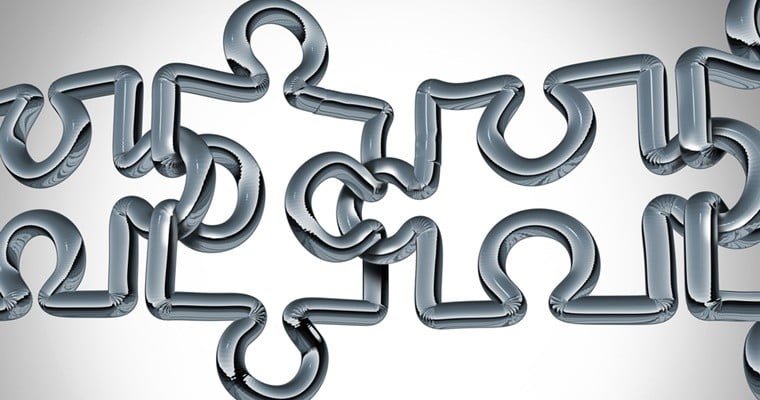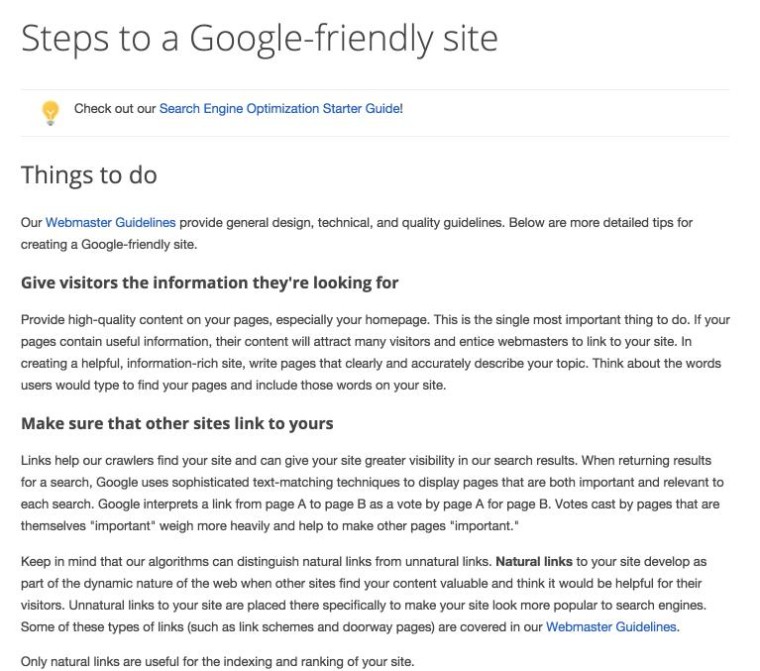
 “Link building” is a bad word to most SEOs and online marketers. If you’re an agency who does link building, you get fired by your clients. If you’re an in-house SEO who does link building, you get fired from your company. If you do link building, your site gets hit with a penalty. However you slice it, link building is evil incarnate in the world of search engine optimization.
“Link building” is a bad word to most SEOs and online marketers. If you’re an agency who does link building, you get fired by your clients. If you’re an in-house SEO who does link building, you get fired from your company. If you do link building, your site gets hit with a penalty. However you slice it, link building is evil incarnate in the world of search engine optimization.
Or is it?
It seems to me as if SEOs have to tow the party line. “Link building is evil” and therefore, SEOs must act in like they believe link building is bad. Because SEO is still recovering from the smut of old link building days, we have to recover our reputation by declaring loudly, with the rest of them, that link building is horrible!
But every SEO knows that link building is absolutely imperative for successful SEO (link goes to an article on the topic on my own site). We’re caught in the classic Catch-22 of modern SEO — the need and evilness of link building.
I want to sketch out what I believe the future of link building is, but first, we need to take a look at two important subjects: Why link building is bad, and why link building is good.
The Evils of Link Building
Link building is the locus of classic black hat techniques from a few years ago.
Remember the wild west days of SEO, when you could PayPal a few bucks to someone and get 200 links to your website in a few hours? “Get me to the first position on Google” was totally not a problem, as long as you knew what strings to pull and what links to build.
However, it was spam city. Google wised up and started putting the kibosh on these practices. Algorithms got better at detecting against-the-rules junk, and SEOs responded by respecting the limits imposed upon them.
Today, you are totally unable to rank by exploiting the black-hat techniques that SEOs used to pawn off as “optimization.” Alarmingly, there are still some shady agencies that do commit such disrespect to the search gods. In reality, what these agencies are doing is accepting money in exchange for smearing a website in the dirt. Penalties shall come upon them like a plague.
I can’t tell you the number of times that I’ve responded to a distraught call or email from someone saying “We hired an SEO agency to help us, and now we have a penalty!”
In every case, the issue is with link building. I have yet to see a manual Google penalty that is levied for something other than links.
That’s the evil of link building. Once you understand the slimy side of link building, you begin to realize why it’s such a point of contention among SEOs.
But that’s only half the story.
The Necessity of Link Building
When we talk about “link building” the first thing we need to do is define our terms. The semantics of the issue are notoriously thorny.
One the one hand “link building” is a baggage-laden term, rife with visions of spammy link bots and black hat techniques. On the other hand, “link building” is a functional term that simply refers to the white-hat technique of optimizing a site through content and best practices in order to naturally gain legitimate backlinks.
What’s an SEO to do? Well, you can call it what you want, as long as you define your terms. If you prefer a more sanitized phrase like “earning links” or some other variation, that’s fine.
Why is this so important? Because link building now has two distinct definitions:
- Definition 1: Circa 2011 spammy backlink building through black-hat techniques. (Bad!)
- Definition 2: Modern legitimate earning of backlinks through appropriate methods. (Good!)
The fact is, the search algorithms are still heavily weighted towards backlinks. How do we know this?
Basically, because Google tells us so.
Let’s first go to the bible of all SEOs, the Webmaster Guidelines. This is where Google tells us what’s good, what’s bad, and how to fix all our problems.
Take a look.

The question that this article answers is, What are the “steps to a Google-friendly site”? The answer: “Make sure that other sites link to yours.” It’s the second factor on the list, ranking only behind “give visitors the information they’re looking for.”
As late as 2013, Google’s own ranking article had this bit of advice (now changed):
In general, webmasters can improve the rank of their sites by increasing the number of high-quality sites that link to their pages.
Google’s “Inside Search” has critical information that helps us understand how the algorithm works:
As our crawlers visit these websites, they look for links for other pages to visit. The software pays special attention to new sites, changes to existing sites and dead links.
These are all positive indications that Google still values links as a factor in search ranking. But we can also tell by the negative things that Google says about spammy links.
These comments, again from Inside Search, alert us to the significance of links. Google lists these two factors as major spam signals:
Unnatural Links From a Site
Google detected a pattern of unnatural, artificial, deceptive or manipulative outbound links on this site. This may be the result of selling links that pass PageRank or participating in link schemes.
Unnatural Links to a Site
Google has detected a pattern of unnatural artificial, deceptive or manipulative links pointing to the site. These may be the result of buying links that pass PageRank or participating in link schemes.
If unnatural, artificial, deceptive or manipulative links are so bad, then the converse must be true — good links help your site.
But who needs this information when we have experience? How many of us know or experienced first hand the power of a single high-authority link to a site that catapulted the page or site in the rankings?
Obviously, search is complex, and there are myriad factors that affect a site’s rankings. That is true and always will be. But this is true as well: Natural and authoritative links to a site help that site improve rank.
The Future of Link Building
Now that we’ve laboriously laid an appropriate foundation, let’s move on to the future of link building. I believe there are more than these six issues to consider. However, these are what I consider to be the most reliable and significant changes to link building in the coming years.
Keep in mind that I’m focusing on Google as the driving search engine of note in the discussion below (with the exception of number 5 and 6).
1. Links Will Still be a Significant Part of the Algorithm
Links aren’t going away as a search factor. They are too embedded in the algorithm to be completely extricated. One can simply not expect to have an algorithm that disregards links. We’re stuck with links for a while — a good while, I think.
2. The Algorithm Will Become Increasingly Attuned to Non-Legitimate Forms of Building Links
Early in 2014, Google showed us that it’s still identifying and penalizing non-legitimate forms of link building. I think that will continue. With every iteration of Penguin, we see a tightening of the algorithm against spammy link building. Google is and always will be against spam in all its dark and ominous forms. The algo will get even smarter in spotting the lurking evil of links that aren’t supposed to be rewarded.
3. The Algorithm Will Shift Towards Stronger Alternate Signals
I think that Google is trying to get away from links as a ranking factor. Major algorithm changes are focused on fighting spam, especially spammy backlinks. But as they fight spam, they need something to replace it as a ranking factor. What can replace it? There are options, and they’ve already showed us some of those things that improve a site’s quality. Content is the biggest — high-quality, long form, well-written content. Another one is security, as the HTTPS ranking signal algorithm indicates.
4. The Algorithm Will Prefer to See Co-Citation, Co-Occurrence, and General Brand Authority
There are three factors I see as increasingly important in the upcoming years. Co-citation and co-occurrence are two factors, as I’ve discussed elsewhere. These non-direct forms of link building and reference are already a presumed part of the algorithm, and will probably be increasing in significance. Another parallel reason is brand authority. As some SEOs have noted, PR (or brand authority) and SEO are being rolled into a single powerful search entity. The power and authority of a brand is no longer dependent upon its cultural cachet, but upon its web presence and overall referencing in the digital landscape.
5. An Evolution of User Search Practices
Google isn’t the only one changing. Users are changing, too. They’re using their mobile devices to browse, search, and navigate the web. Wearable technology is becoming more common, leading to a gradual decline of traditional search methods. I don’t know exactly where the shift in user search practices is leading, but I know that it will probably be less reliant upon traditional search practices, and therefore less dependent upon Google as the defining factor in ranking and link authority.
6. An Increase in Social Search
Social media is the new Google. Many people prefer to conduct searches within their own social networks, rather than trust Google to give them the right information. If they want to find out the best brand for running shoes, more and more users will query their social networks, rather than Google “best running shoe brand.” Social media is nowhere near a plateau. It’s rising in functional usage, and going to be with us for the long haul. And the thing about social media is that it doesn’t depend on backlinks as a ranking signal.
Conclusion
We have links to deal with for much of the foreseeable future. For that reason, it’s important to depend upon sustainable link building practices. I do not advocate indiscriminate and unhealthy link building. Instead, I advise SEOs and marketers to spend the bulk of their resources on high quality content marketing for the most effective and enduring method of search optimization.
[“source-searchenginejournal”]
